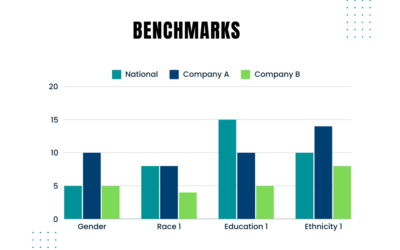Goals have come to dominate our modern workplace. Goals are a way of breaking down business plans into smaller more manageable pieces. This enables an organization to accomplish some of the targets and plans that were specified during their planning cycle.
Organizations set strategic goals, teams set team goals, and employees set individual goals. Team goals and employee goals should be aligned with and supporting the organizational strategic goals.
A common practice is that goals are set early in the year and then, at the end of the year, achievement against those goals is measured. For example, an employee will usually meet with his or her manager early in the year to define goals for the year. Then, at the end of the year the employee is measured against the stated goals that were set at the beginning of the year. Further, employee bonuses are frequently tied to the successful completion of their defined goals. The widely accepted understanding is that goals should be SMART: specific, measurable, achievable, realistic, and time bound.
Is this the best approach?
SMART goals are widely used to implement strategies and monitor performance, but research suggests that some elements of SMART goals may hinder an organization’s broader objectives.
The first consideration is the overall timeline of the process. SMART goals are set once and then individuals and teams work throughout the year to achieve these goals. However, this approach overlooks the value of ongoing discussions throughout the year. In today’s fast-changing environment, failing to regularly revisit and adjust goals can be a significant risk for organizations.
Another consideration is the achievable aspect of SMART goals and the fact that employee end of year compensation is tied to achieving goals. Employees often set overly conservative goals to ensure success, stifling ambition and overall organizational success.
Finally, this process does not encourage collaboration, which is a key element to achieving organizational success. When individuals and teams set their own goals that are not shared with others in the organization, there is a risk of misaligned goals across different individuals and teams within the organization.
FAST goals can help to overcome some of these downsides of SMART goals.
What are FAST goals?
- Frequently Discussed: Short term goals that allow for faster evaluation and achievement cycles, with multiple review cycles throughout the year. Progress toward the goal and resources allocated toward the goal are discussed on a regular basis. The feedback loop enables fast modifications, as required.
- Ambitious: The goals are possible to achieve but stretch you a little – just past your point of comfort. Goals that are challenging yet achievable with effort — commonly referred to as stretch goals —motivate us to strive toward achieving them.
- Specific: The goals have concrete milestones and metrics. This way you can measure how much progress you have made toward achieving the goal.
- Transparent: The goals should be available for view across the organization. Employees should feel comfortable sharing their goals with team members and those outside their team. This encourages accountability and drives the organization to meet its overall strategic goals. This also helps to overcome the risk of misaligned goals. Finally, if an element of bonus or profit sharing is tied to the organization meeting its overall strategic goal, transparency allows and encourages individuals and teams to provide support across the organization, also increasing the likelihood that the organization will meet its strategic goals.
What are the benefits of FAST goals?
FAST goals benefit employees by fostering a sense of purpose and connection to the organization’s larger mission, boosting morale and engagement. The emphasis on regular feedback and collaboration helps employees feel supported and valued, while ambitious yet achievable goals encourage growth and innovation without fear of failure. This approach creates a positive work environment where individuals are motivated to excel and contribute meaningfully to the team’s success. All of this contributes to the success of the organization and helps the organization achieve its organizational goals.
In today’s rapidly evolving workplace, FAST goals offer a modern approach to goal-setting that emphasizes agility, alignment, and accountability. By focusing on frequent discussions, ambitious yet achievable objectives, and transparent tracking, FAST goals drive collaboration and innovation across teams. Unlike traditional methods, this approach encourages employees to stay adaptable and aligned with organizational priorities, even in dynamic environments. As businesses continue to navigate change, adopting FAST goals can be a powerful strategy to foster growth, improve performance, and achieve long-term success.





0 Comments